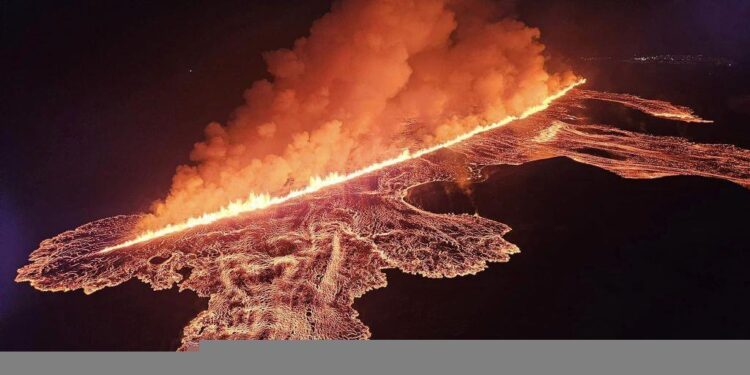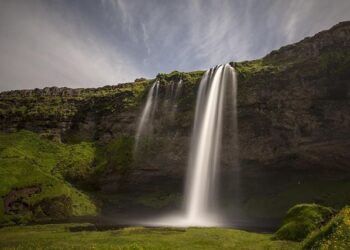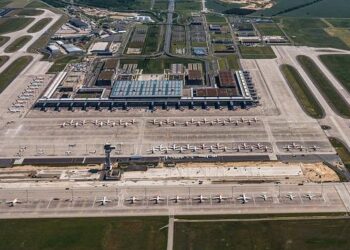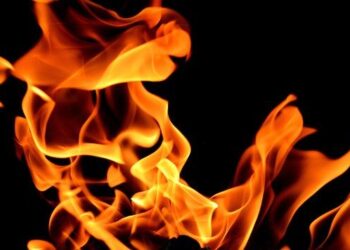Iceland’s volcanic activity has long fascinated scientists and captured global attention, as the island nation sits atop one of the most geologically active regions on Earth. Recent eruptions have reignited questions about why Iceland’s volcanoes persistently erupt and the risks they pose to local communities and international air travel. This article explores the underlying causes of Iceland’s relentless volcanic activity and assesses the potential dangers these fiery mountains present, drawing on expert insights and the latest geological data.
Understanding the Geologic Forces Driving Iceland’s Persistent Volcanic Activity
Iceland’s remarkable volcanic activity is primarily fueled by its unique position atop the Mid-Atlantic Ridge, where the North American and Eurasian tectonic plates are continuously drifting apart. This divergent boundary causes magma from the Earth’s mantle to rise, creating a dynamic environment where volcanoes frequently erupt. Additionally, the presence of a potent mantle plume, often referred to as the Iceland hotspot, supplies an extra source of molten rock that feeds the island’s prolific eruptions. These forces work in tandem, producing an ever-changing landscape shaped by seismic tension and volcanic pressure.
The island’s volcanic behavior can be broken down into key geological contributors:
- Tectonic Plate Divergence: Slows spreading at approximately 2 cm per year, allowing magma to breach the crust.
- Hotspot Activity: Sustains high magma temperatures, leading to longer-lasting eruptions.
- Crustal Fracturing: Extensive fissures create pathways for magma to surface rapidly.
| Geologic Factor | Impact on Volcanic Activity | Frequency Influence |
|---|---|---|
| Mid-Atlantic Ridge | Plate separation generates magma upwelling | High |
| Iceland Hotspot | Increases magma volume and temperature | Moderate |
| Crustal Fractures | Creates vents and fissures for eruptions | High |
Assessing the Risks Posed by Frequent Eruptions to Local Communities and Air Travel
Frequent volcanic eruptions in Iceland present multifaceted risks that extend beyond immediate lava flows and ash fallout. Local communities face disruptions ranging from property damage to enforced evacuations. These events compromise air quality and water sources, which can have long-term health implications. Additionally, the unpredictable nature of volcanic activity complicates emergency preparedness, forcing residents to live in a constant state of alert. Key risk factors include:
- Lava inundation: Destruction of homes, farmland, and infrastructure.
- Ash fallout: Respiratory problems, contamination of agricultural land, and damage to machinery.
- Pyroclastic flows: Rapidly moving hot gas and ash that can threaten lives.
Air travel disruptions represent a significant concern on a global scale. Volcanic ash clouds can cause jet engine failure and reduced visibility, forcing widespread route cancellations and rerouting across the North Atlantic airspace. Aviation authorities monitor these ash plumes closely, but the speed and domed shape of Icelandic eruptions can challenge timely response. The table below summarizes the typical impacts from ash clouds on air travel:
| Ash Concentration (mg/mÂł) | Impact on Aircraft | Recommended Action |
|---|---|---|
| 0.1 – 2.0 | Reduced visibility, sensor interference | Flight delays and minor route adjustments |
| 2.1 – 4.0 | Engine wear, potential sensor failure | Reroute flights away from plume |
| > 4.0 | Complete engine failure risk | Airspace closure until ash disperses |
Strategies for Monitoring and Mitigating the Impact of Icelandic Volcanoes
To effectively manage the ongoing risk posed by Iceland’s restless volcanoes, authorities have invested heavily in a network of advanced monitoring systems. This comprehensive setup includes a combination of seismic sensors, GPS stations, gas emission analyzers, and real-time satellite imagery that collectively detect early signs of volcanic unrest. These tools not only pinpoint subtle ground deformations but also track changes in volcanic gas output, which often precede eruptions. This granular data enables geologists to issue timely warnings, ensuring communities and air traffic are alerted well before volcanic hazards escalate.
Mitigation efforts integrate both technological and infrastructural approaches designed to minimize damage and disruption. Local governments collaborate on emergency evacuation protocols, public education campaigns, and infrastructure reinforcement, particularly around hotspots like the Reykjanes Peninsula. Key strategies include:
- Establishing clearly marked evacuation routes with regular drills
- Deploying barriers and diversion channels to control lava flow where feasible
- Maintaining contingency plans with aviation authorities to reroute flights promptly
- Utilizing predictive volcanic models to simulate eruption scenarios and response effectiveness
| Monitoring Tool | Purpose | Benefit |
|---|---|---|
| Seismic Networks | Detect underground earthquakes | Early detection of magma movement |
| GPS Stations | Measure ground deformation | Track inflation signaling eruption |
| Gas Emission Sensors | Analyze volcanic gases | Identify changes in magma activity |
| Satellite Imaging | Observe surface changes remotely | Provide real-time eruption alerts |
Closing Remarks
As Iceland’s volcanoes continue to shape the island’s rugged landscape, understanding the forces behind their frequent eruptions remains crucial for both residents and global observers. While these natural phenomena pose significant risks, advances in monitoring and emergency planning have improved preparedness and response. As scientific research progresses, balancing Iceland’s volcanic activity with safety and environmental stewardship will be key to living alongside one of the planet’s most dynamic geological settings.
















